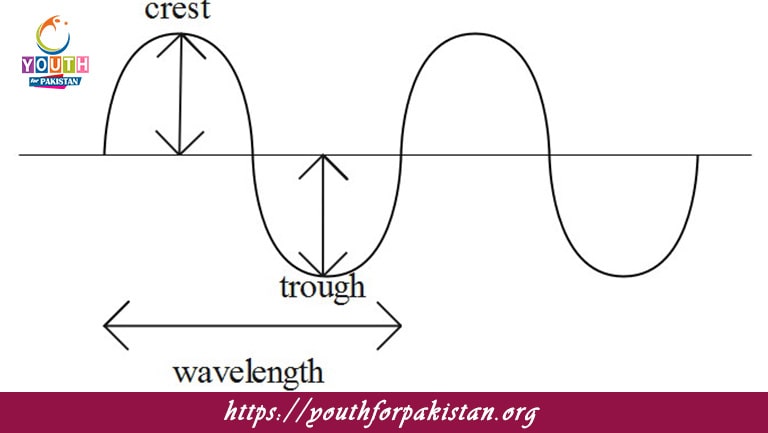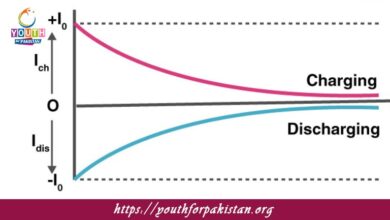Crest MDCAT MCQs with Answers

Welcome to the Crest MDCAT MCQs with Answers. In this post, we have shared Crest Multiple Choice Questions and Answers for PMC MDCAT 2024. Each question in MDCAT Physics offers a chance to enhance your knowledge regarding Crest MCQs in this MDCAT Online Test.
Crest MDCAT MCQs Test Preparations
The crest of a wave is defined as:
a) The lowest point of the wave
b) The point where the wave speed is zero
c) The highest point of the wave
d) The point where the wave crosses the equilibrium position
In a sinusoidal wave, the distance between two consecutive crests is called:
a) Amplitude
b) Frequency
c) Wavelength
d) Speed
If the amplitude of a wave is 5 cm, the distance from the equilibrium position to a crest is:
a) 2.5 cm
b) 5 cm
c) 10 cm
d) 0 cm
What is the phase difference between two consecutive crests of a wave?
a) 0 degrees
b) 90 degrees
c) 180 degrees
d) 360 degrees
The number of crests passing a point per unit time is called:
a) Wavelength
b) Amplitude
c) Frequency
d) Period
In a standing wave pattern, crests are:
a) At the same points as the troughs
b) Fixed points with maximum amplitude
c) Points where there is no movement
d) Moving along the string
If the wavelength of a wave is 4 meters, the distance between two successive crests is:
a) 1 meter
b) 2 meters
c) 4 meters
d) 8 meters
In a progressive wave, the points where the displacement is maximum are called:
a) Nodes
b) Antinodes
c) Troughs
d) Equilibrium points
The amplitude of a wave is:
a) The distance between two consecutive crests
b) The maximum displacement of a point on the wave from the equilibrium position
c) The distance between a crest and a trough
d) The number of waves passing a point per second
If a wave has a frequency of 10 Hz and a wavelength of 2 meters, the distance between two consecutive crests is:
a) 1 meter
b) 2 meters
c) 10 meters
d) 20 meters
In a transverse wave, crests are:
a) Points of maximum compression
b) Points of maximum rarefaction
c) Points of maximum displacement upward
d) Points of zero displacement
If the phase difference between two crests is 360 degrees, they are:
a) Out of phase
b) In phase
c) At different frequencies
d) At different amplitudes
The phase difference between a crest and the next trough in a sinusoidal wave is:
a) 0 degrees
b) 90 degrees
c) 180 degrees
d) 360 degrees
In a wave with a frequency of 50 Hz and a wavelength of 3 meters, how many crests pass a point in 2 seconds?
a) 25
b) 50
c) 75
d) 100
For a wave traveling along a string, if the wavelength is 0.5 meters, the distance between two adjacent crests is:
a) 0.5 meters
b) 1 meter
c) 2 meters
d) 4 meters
The energy of a wave is proportional to the:
a) Frequency squared
b) Amplitude squared
c) Wavelength
d) Phase difference
The time it takes for one complete wave cycle to pass a point is known as the:
a) Frequency
b) Wavelength
c) Period
d) Amplitude
If the frequency of a wave is doubled, what happens to the distance between consecutive crests?
a) It doubles
b) It halves
c) It remains the same
d) It quadruples
In a waveform, the distance between a crest and the next crest is equal to:
a) The wavelength
b) The amplitude
c) The period
d) The frequency
The amplitude of a wave is measured from the:
a) Trough to the crest
b) Crest to the equilibrium position
c) Equilibrium position to the crest
d) Crest to the next crest
The wave with a higher amplitude has:
a) Higher frequency
b) Greater speed
c) More energy
d) Longer wavelength
The distance between two consecutive crests of a wave traveling through a medium is also known as the:
a) Amplitude
b) Frequency
c) Speed
d) Wavelength
A wave with a crest of amplitude 3 meters and a trough of -3 meters has an amplitude of:
a) 3 meters
b) 6 meters
c) 1.5 meters
d) 0 meters
In a standing wave, the points where crests occur are known as:
a) Nodes
b) Antinodes
c) Troughs
d) Zero displacement points
A wave described by y = A sin(kx) has a crest at:
a) x = 0
b) x = π
c) x = 2π
d) x = 4π
The amplitude of a wave is:
a) The distance between the equilibrium position and the crest
b) The distance between two consecutive crests
c) The distance between a crest and the next trough
d) The speed of the wave
If the wavelength of a wave is 3 meters, the distance between two consecutive crests is:
a) 1 meter
b) 3 meters
c) 6 meters
d) 9 meters
A wave traveling in a medium has a frequency of 20 Hz and a speed of 100 m/s. What is the wavelength?
a) 2 meters
b) 5 meters
c) 10 meters
d) 20 meters
The number of crests passing a point in 1 second is:
a) Wavelength
b) Frequency
c) Amplitude
d) Period
In a sinusoidal wave, if two points are separated by one wavelength, they have a phase difference of:
a) 0 degrees
b) 90 degrees
c) 180 degrees
d) 360 degrees
The phase of a wave at a crest is:
a) 0 degrees
b) 90 degrees
c) 180 degrees
d) 360 degrees
If the phase difference between two crests is 180 degrees, what is their relative position?
a) They are in phase
b) They are out of phase
c) They are at different frequencies
d) They are at different amplitudes
In a wave, if two crests are 2 meters apart, the wavelength of the wave is:
a) 2 meters
b) 4 meters
c) 1 meter
d) 8 meters
The phase difference between a crest and a trough is:
a) 0 degrees
b) 90 degrees
c) 180 degrees
d) 360 degrees
A wave with a crest-to-crest distance of 1.5 meters has a wavelength of:
a) 1.5 meters
b) 3 meters
c) 0.75 meters
d) 0.5 meters
The amplitude of a wave is measured from:
a) Crest to crest
b) Trough to trough
c) Crest to equilibrium position
d) Equilibrium position to trough
The distance between a crest and a nearby trough in a wave is:
a) The wavelength
b) Half the wavelength
c) The amplitude
d) The frequency
The distance traveled by a wave in one complete cycle is known as the:
a) Period
b) Frequency
c) Amplitude
d) Wavelength
A wave with crests of 3 meters amplitude has:
a) A peak-to-peak amplitude of 3 meters
b) A peak-to-peak amplitude of 6 meters
c) An amplitude of 6 meters
d) A peak-to-peak amplitude of 1.5 meters
The distance from one crest to the next crest in a wave is known as the:
a) Amplitude
b) Period
c) Frequency
d) Wavelength
If you are interested to enhance your knowledge regarding Physics, Chemistry, Computer, and Biology please click on the link of each category, you will be redirected to dedicated website for each category.





